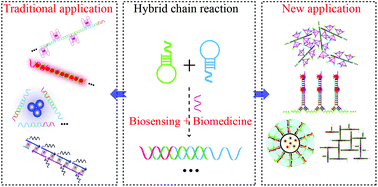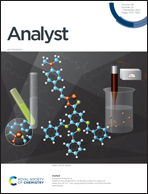Traditional and new applications of the HCR in biosensing and biomedicine
Abstract
The hybridization chain reaction is a very popular isothermal nucleic acid amplification technology. A single-stranded DNA initiator triggers an alternate hybridization event between two hairpins forming a double helix polymer. Due to isothermal, enzyme-free and high amplification efficiency characteristics, the HCR is often used as a signal amplification technology for various biosensing and biomedicine fields. However, as an enzyme-free self-assembly reaction, it has some inevitable shortcomings of relatively slow kinetics, low cell internalization efficiency, weak biostability of DNA probes and uncontrollable reaction in these applications. More and more researchers use this reaction system to synthesize new materials. New materials can avoid these problems skillfully by virtue of their inherent biological characteristics, molecular recognition ability, sequence programmability and biocompatibility. Here, we summarized the traditional application of the HCR in biosensing and biomedicine in recent years, and also introduced its new application in the synthesis of new materials for biosensing and biomedicine. Finally, we summarized the development and challenges of the HCR in biosensing and biomedicine in recent years. We hope to give readers some enlightenment and help.

- This article is part of the themed collection: Analyst Review Articles 2021


 Please wait while we load your content...
Please wait while we load your content...